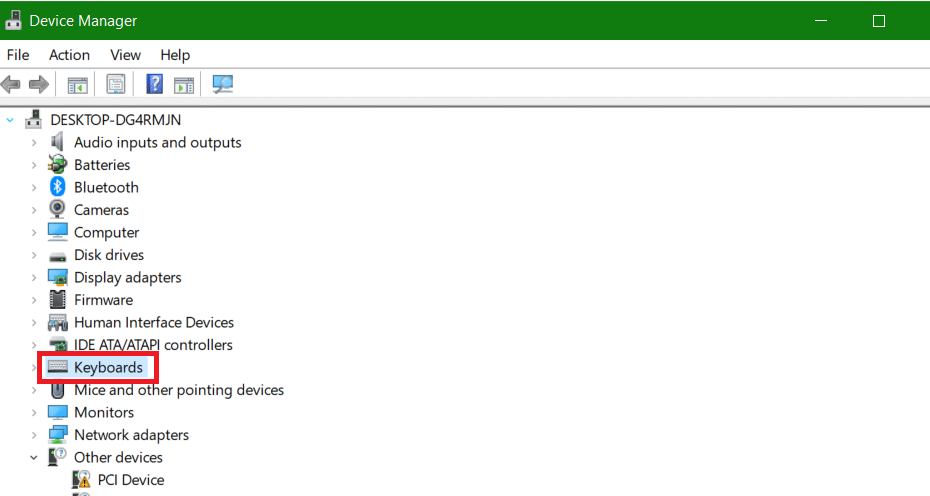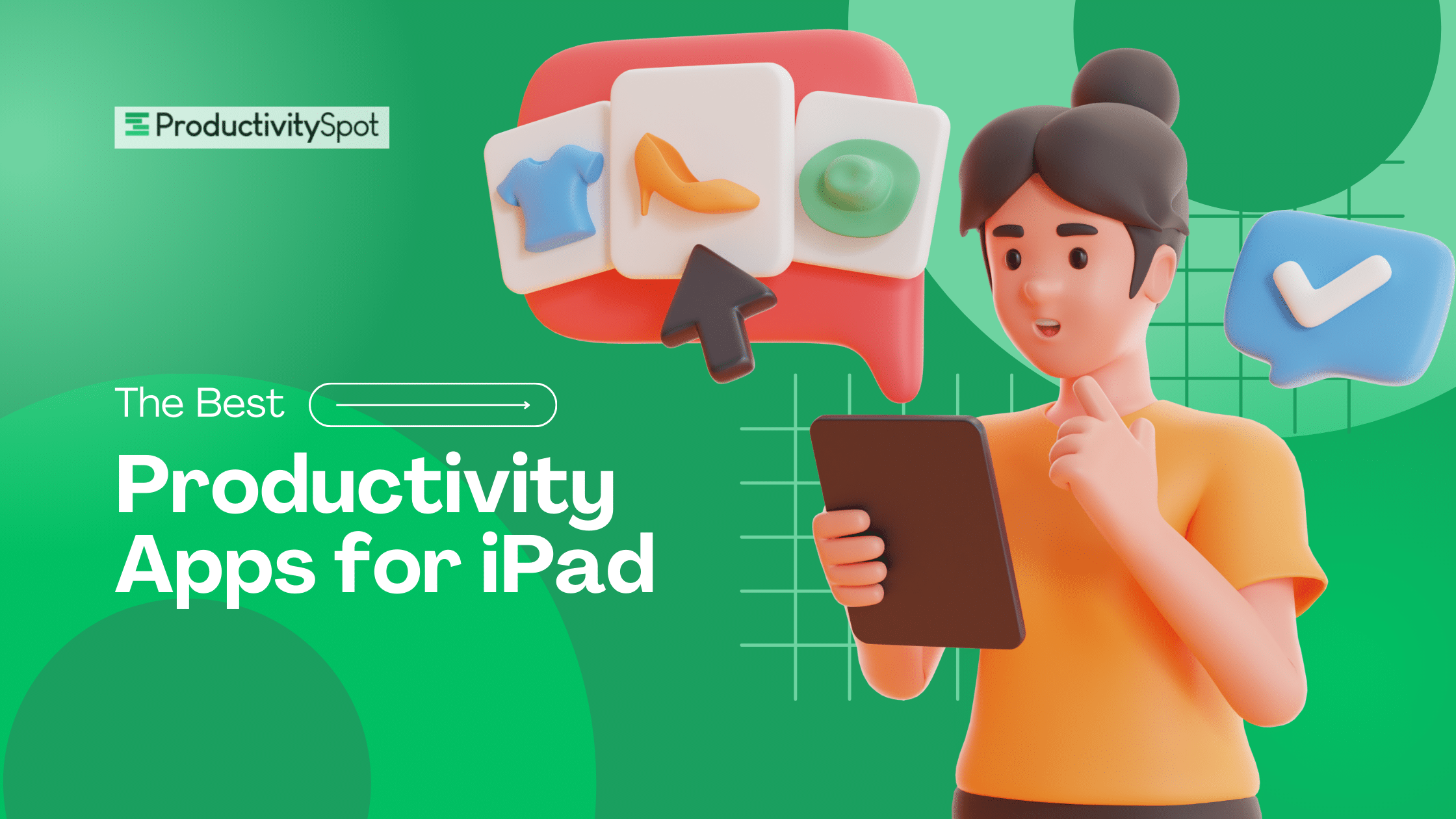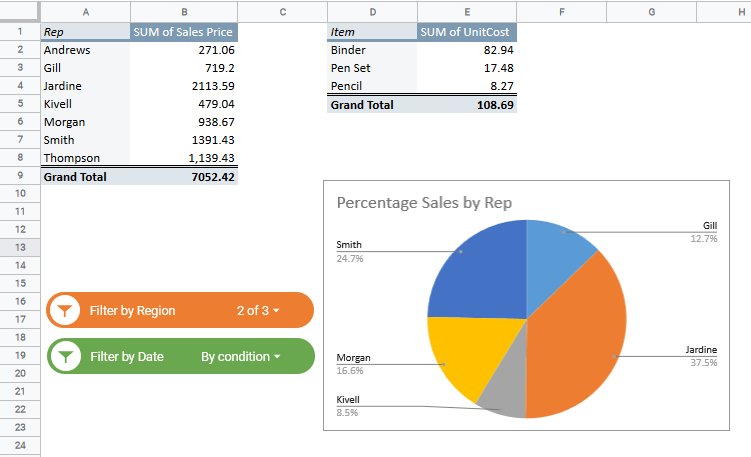Most productivity-focused apps focus on a single area of productivity, leaving a gap in your workflow. What if one app could handle everything — and keep it all in one place?
Notion is an incredibly versatile option designed to replace multiple productivity apps. In this guide, I’ll show you how to use Notion and take advantage of its features. This is the only beginner Notion tutorial you’ll ever need!
This Article Covers:
What Is Notion?

Notion is a productivity tool with the potential to be so much more. Some use it as a one-stop-shop solution to combine tasks, wikis, documentation, databases, and notes. Since it’s great for individuals and teams alike, it’s no surprise that Notion has become incredibly popular.
This app has the potential to boost productivity and keep you more organized. Once you pass the learning curve, Notion is customizable to your needs, reducing your reliance on other apps.
Related: Need a bit more help? There are plenty of Udemy courses that walk you through Notion!
How To Use Notion: Key Features
As a productivity tool, Notion has many features that make it an incredibly personal experience:
- Personalized Workspaces – Add different types of content and create the perfect workspace to suit your needs.
- Collaborative Features – Facilitate team collaboration by assigning tasks, communicating, and sharing your workspaces with team members.
- Task Management Tools – Manage features include task assignments, due dates, and progress tracking. These reduce the need for a dedicated task management app.
- Database Management Tools – Create simple databases to store and organize data like images, files, and text.
- Text Editor and Formatting – Use the rich text editor to organize your thoughts and data by formatting features like headings and tables.
- Shortcuts – Use the Notion shortcuts to make navigation easier and further streamline your workflow.
- Templates – Utilize the many paid templates (on websites like Etsy). You can also use free Notion templates to set up your app.
Note: As AI advances, Notion AI allows you to write more easily, get answers, and autofill tables. This feature is included in every account, though you receive limited access unless you subscribe to the additional paid AI plan.
Why Does Notion Feel So Overwhelming?
Notion is a complex app that offers various options for organizing tasks. You’ll see a blank page when you visit Notion for the first time. It’s up to you to set up all those mood boards, trackers, and pages, which can feel like a significant undertaking!
Before you organize your time and tasks, list your primary goals. Next, visit the Notion template gallery to see how the app might help you achieve them. I’ve also included some inspiration for the best ways to use Notion.
The Easiest Way to Set up Notion
Creating a Notion account — and setting it up — is a breeze. Everything can be done within your browser, but you can also download the apps. Below, you’ll find Notion for Beginners instructions.
Setting up Notion with a Browser
- Navigate to the Notion website. Click “Get Notion free” in the screen’s upper-right corner.

- Sign up using your e-mail address, log in using your Google account, or access it through your Apple ID.

- Once logged in, explore Notion’s features and create your notes and/or pages.

Setting up Notion with the App
- Go to the app store and search for “Notion.” Download the app to your device.

- After opening the app, create a new account or log in with your Google account/Apple ID.

- Once logged in, you can start creating your first page.

Install Notion Web Clipper

Notion Web Clipper lets you save any web page to your desktop or mobile Notion account. This is a convenient way to save recipes, ideas, and notes.
What Is Notion Used For?
With all its features, it’s easy to see why you can do almost anything with Notion’s “blank slate” style. There’s no best way to use the app, but I’ve included a few ideas for using Notion, whether you’re a student, professional, or personal user.
1. Manage Tasks and Projects
A great way to avoid chaos is by organizing your tasks and calendar. Although you can use other apps and calendars, everything can be consolidated into Notion.
Notion has many built-in templates to make getting organized a breeze. Consider the To-do list template below.

If you’d like to manage projects and tasks, you can try Notion’s Projects & tasks template:

You can even use Notion to plan and manage sprints, thanks to the free built-in Projects, Tasks, & Sprints template:

Related Reading: How to Create a Gantt Chart in Notion
2. Track Meetings

Have trouble keeping track of all your meetings? Notion has a solution for that! The app’s Meetings template lets you track and manage meetings, ensuring everyone on the team knows when work is done and when they need to appear.
3. Take Notes

If there’s one thing Notion is excellent for, it’s taking notes with text, images, and files. You can also import data into Notion through integrations with other apps and services.
Note-Taking: How to Use Notion Effectively for Students
There are countless ways Notion can improve your daily work (or study) flow. However, I recommend creating pages for each subject. It’ll help keep everything organized and easy to find.
You can also create pages for each topic covered by your class, then link them all on a single page to serve as a table of contents.
4. Brain Dump and Brainstorming
Brain dumps are a great way to keep track of ideas, thoughts, and to-do lists that pop into your head. I like to write down my thoughts without context or commitment, revisiting them when I have more time.
Notion can also be used to brainstorm and mind map to get those creative juices flowing.
5. Track Your Budget

There are two free Notion budget templates to help you get your finances in check:
- Budget Planning
- Simple Budget
There are also plenty of paid templates on websites like Etsy. You can avoid overspending — and maybe even increase your savings — whichever template you choose.
6. Journal Your Thoughts

While it might not seem the most obvious option, Notion is an excellent way to journal your daily thoughts, emotions, and memories.
The free Journal template encourages you to write and organize your thoughts. You can also categorize your entries (and view them by date) to reminisce more easily.
7. Document and Organize

Use Notion to create unlimited pages and notes. Quickly collate pages into a wiki for improved organization and dissemination of crucial information. There are multiple wiki templates to suit your needs, like Product wikis, Engineering wikis, and Sales wikis.
8. Plan Your Days

One of the best things to use Notion for is planning. Use this app as a daily planner or for meal or trip planning.
Note: There are many Notion planner templates on Etsy.
9. Track Goals and Habits

If you’re using Notion for personal productivity, explore templates that can help you track your goals, health, and habits. Plan your annual goals, track your workouts, and even work on changing your habits.
10. Track Lists and Recipes
Track your shopping lists and recipes to ensure you never forget an item at the store again. Notion’s cross-platform compatibility makes creating and accessing lists and recipes easy.

How To Use Notion: Understanding the Features
To use Notion to its fullest, discover the countless features that can help manage complex tasks.
Sidebar/Navigation

On the left side of your screen, the sidebar contains the main pages of your workspace. The first time you open it, a Notion template will assist you in discovering more about the platform, like Updates, Settings & Members, and Quick Finder. Use the sidebar to navigate between the pages.
Blocks

Notion comprises 50 types of customizable blocks (e.g., text paragraph, image, calendar, Kanban chart). You can insert Figma files, Google Maps, Framer prototypes, and embedded files stored on OneDrive.
For every type of block, properties can be applied to distinguish them from other blocks. For example, a text block can be bolded, underlined, italicized, colored, or highlighted.
The main Notion blocks used by most people include:
- Text
- Images
- Headers
- Toggle lists
- Tables
- To-do lists
- Embedded files (e.g., maps, videos, and audio)
Pages

Every page on Notion has the same properties: Titles, icons, and cover images. Customizing these properties to improve navigation or turn each page into something else is easy.
Thanks to Notion’s versatility, you can change things easily:
- Turn blocks into pages (and vice-versa)
- Transform items into a directory, table, or list
- Create pages within a page (i.e., a subpage)
Note: Notion pages aren’t as flexible as blocks. If a page doesn’t allow you to achieve a particular effect, explore blocks instead.
Database

A Notion database is a collection of pages where you can edit each item and store subpages. Thanks to a database’s customizable properties, it can be viewed in multiple ways:
- Table – This database layout lets you see the items in rows and columns.
- Timeline – The items are sorted according to dates, which can be viewed by scrolling from left to right.
- Board – This is otherwise known as the “Kanban” view, where the board groups your Notion items according to your properties.
- List – This is one of the most straightforward layouts in Notion database views, where items can be customized using different properties.
- Gallery – This database view allows you to see and organize your images or items in the form of larger cards.
- Calendar – This layout showcases items based on their date. You can view them in the form of a traditional calendar.
Note: Notion keeps adding new features, so expect the databases to improve.
Files

Looking for task management flexibility? Notion’s hierarchical file system has the power to create hyperlinks that automatically adjust when pages are moved. Notion’s files can also be turned into folders entirely independent of each other.
Wikis

Notion also allows you to build wikis, which are interactive knowledge base pages where multiple users collaborate and create content. You might use Notion to create user knowledge base tools or entire FAQ sections. While you can make a wiki from scratch, templates (like the Product Wiki) are also available.
Toggles

In its simplest form, a toggle is a customizable block that houses other blocks. It’s comparable to how dropdown menus work on regular web pages.
There are two modes on the toggle lists: Active and inactive (which are hidden). It will reappear once you click on the list to activate a toggle. This feature is especially useful for keeping a clean workspace.
Tables

Tables are one of the best Notion features. Here, you can add different characteristics and properties depending on your needs. Within tables, you may also include different types of content:
- Text
- Dates
- Emails
- Links
- Checkboxes
- Formulas
- Links
- Files
- Multi- and single-selected tags
Views

Views allow you to change how your data is presented. You can choose a format that suits your needs or preferences. For now, the available view options in Notion are:
- Table
- List
- Calendar
- Board
- Timeline
- Gallery
How Can Students Use Notion?
Notion benefits students by helping them take notes and stay organized. If you’re interested in learning how to use Notion as a student, consider using the app for:
- To-do lists – Track your assignments every week, month, or semester.
- Track important dates – Never forget important dates again. Use Notion to track deadlines, start dates, meetings, and exam times.
- Keep your notes organized – Create course sections and organize them by class syllabi.
- Notes – Add reminders in your student template in Notion and keep backups of your assignments.
- Exam tracker – Track the progress of your exams using Gantt charts or simple Kanban boards.
- Track links and reading assignments – Keep important links to books and other resources handy.
- Track goals – Set and keep track of your daily, weekly, monthly, and yearly goals.
- Manage finances – Build strong financial habits by setting and tracking your budget.
- Build better habits – Track daily habits — and build new ones — with habit tracker templates.
How Much Does Notion Cost?
Like many productivity apps, Notion requires a monthly or annual subscription to access all its features:
- Free – This plan gives you access to most features, including basic page analytics, integrations, 7-day page history, and up to 10 guest invites. Individuals get unlimited blocks (but blocks are limited for teams).
- Plus – $8 per user/month (billed annually) or $10 per user (billed monthly) – This plan includes all the Free features and unlocks unlimited blocks for teams, unlimited file uploads, access to a thirty-day history, and up to 100 guest invites.
- Business – $15 per user/month (billed annually) or $18 per user/month – This plan unlocks everything in Plus, bulk PDF exporting, 90-day history, private team spaces, SAML SSO, 250 guest invites, and more.
- Enterprise – The Enterprise accounts are customized, so you must contact Notion sales for a personalized price. Unlock everything in previous plans, strengthen security, improve controls, and enhance user experience.
Notion AI Pricing
Notion AI is free for any plan. However, you’ll get limited queries and AI responses unless you subscribe to the Notion AI add-on.
I appreciate how Notion prices its AI feature by making it an add-on. You won’t have to pay for this feature if you don’t intend to use it, but I think the pricing is quite steep. It’s about the same price as a Plus plan.
Notion AI costs $8 per user/month (billed annually) or $10 per user (billed monthly). Users can subscribe to Notion AI even on a free plan.
Bonus Tips for Using Notion
Some additional tips and tricks can help you streamline your workflow even better:
- Take Advantage of Integrations – Notion can integrate with many other apps and services with content sharing and automation.
- Connect Notion to Your Calendar – Track deadlines, meetings, and important dates by connecting Notion to your calendar.
- Use Zapier and IFTTT for Automation – Tools like IFTTT and Zapier can automate tasks between apps, reducing the necessary number of steps and tasks.
- Use Keyboard Shortcuts – To reduce time, keep a cheat sheet of Notion’s keyboard shortcuts handy.
- Use a Readymade Template – Chances are, there’s already a template for what you’re looking for. Check Notion’s built-in or third-party options (on websites like Etsy).
- Customize your experience – Use formatting, color schemes, and branding to make Notion look and feel how you need it to!
Frequently Asked Questions
Is Notion Worth Learning?
Learning Notion can benefit students, professionals, or people seeking to organize their affairs. Even the free option offers plenty of great features to manage tasks.
Is Notion Difficult to Use?
There are countless ways to use Notion, but many features can overwhelm beginners. I’d say that there is a definite learning curve to Notion: It’s easy to start but complex to master.
Is Notion a Good App for Students?
Notion can be beneficial for students due to its flexibility. Students can track personal goals, assignments, projects, new contacts, and budgets. You may find that many Notion tips for students align with the same general tips offered to professionals or personal users. Learn the UI, get used to navigation, and then explore each feature. Don’t forget to try templates!
Is Notion Free for Students Forever?
Notion offers a free student plan with unlimited pages, file uploads, and a 30-day version history. Getting started is easy. Just sign up with a school email address — there’s no need for a credit card.
Conclusion
There you have it! I’ve shown you how to use Notion, and you can start exploring its features. While it may feel overwhelming at first, don’t worry. Just like learning any new skill, Notion is worth it.
Don’t know where to begin? Start getting familiar with the user interface and discover ways to navigate Notion. After that, everything else will start falling into place!
Are you feeling up for a challenge? Learn how to create a Notion calendar to help you manage and organize your time!
Related:






